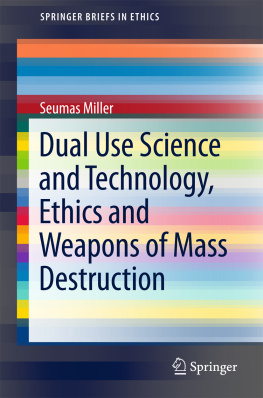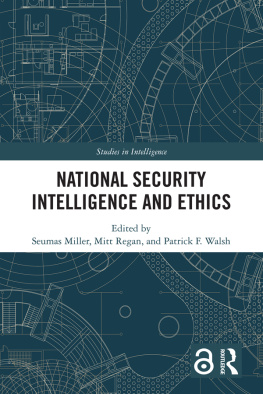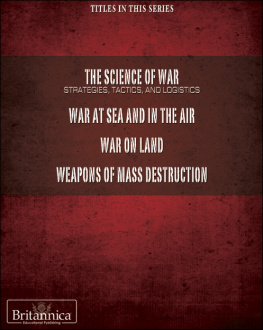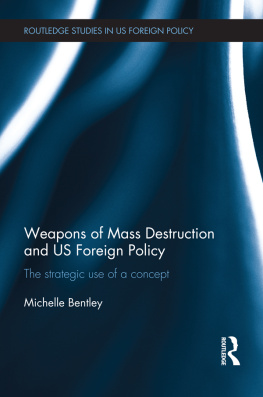1. Introduction
Abstract
The problem of dual-use science research and technology arises because such research and technology has the potential to be used for great evil as well as for great good. On the one hand, knowledge is a necessary condition, and perhaps a constitutive feature, of technologies that contribute greatly to individual and collective well-being. Consider, for example, nuclear technology that enables the generation of low cost electricity in populations without obvious alternative energy sources. So technological knowledge is a good thing and ignorance of it a bad thing. On the other hand, these same technologies can be extremely harmful to individuals and collectives. Consider, for example, the atomic bombs dropped on Hiroshima and Nagasaki . So it seems that, at least with respect to some technologies, knowledge is a bad thing and ignorance a good thing. Accordingly, the question arises as to whether we ought to limit scientific research and/or the development of technology and, if so, which research or technology, in what manner and to what extent.
The problem of dual-use science research and technology arises because such research and technology has the potential to be used for great evil as well as for great good. On the one hand, knowledge is a necessary condition, and perhaps a constitutive feature, of technologies that contribute greatly to individual and collective well-being. Consider, for example, nuclear technology that enables the generation of low cost electricity in populations without obvious alternative energy sources. So technological knowledge is a good thing and ignorance of it a bad thing. On the other hand, these same technologies can be extremely harmful to individuals and collectives. Consider, for example, the atomic bombs dropped on Hiroshima and Nagasaki . So it seems that, at least with respect to some technologies, knowledge is a bad thing and ignorance a good thing. Accordingly, the question arises as to whether we ought to limit scientific research and/or the development of technology and, if so, which research or technology, in what manner and to what extent.
Evidently scientific knowledge that enables the development of dual use technologies is potentially dangerous and therefore, where possible, it should be restricted or perhaps even not acquired in the first place. In short, contrary to popular opinion, there ought to be a degree of collective scientific ignorance , at least among members of the general population. But what is collective ignorance and how does it relate to collective knowledge? More generally, dual use science research and technology are collective epistemic or knowledge-aiming enterprises that produce collective benefits but can also at times cause collective harms. Indeed, they are enterprises conducted by institutions, such as universities, private sector firms and military organisations. Naturally, if the benefits are to flow there is a need to protect and promote scientific freedom . On the other hand, in relation to the potential for harm, scientists and others have a moral responsibility, even if not a legal responsibility, to cooperate in order to avert or, at least, minimise the risks; so dual use research and technology is a matter of collective moral responsibility . But what is collective responsibility and how does it figure in the varied scientific and institutional contexts of the collective epistemic enterprises in question? More specifically, should some dual use research be impermissible or, if not, should access to the resulting scientific knowledge be highly restricted, e.g. censored? What institutional arrangements, e.g. regulations, ought to be put in place in relation to dual use research? These are the questions that this work seeks to address.
Chapters each focus on a particular scientific field or industry of dual use concern, namely, the chemical industry, the nuclear industry, cyber-technology and the biological sciences (respectively).
The problem of dual-use research and technology arises in its most obvious form in the context of weapons of mass destruction (WMDs), whether chemical, nuclear, cyber or biological weapons. Scientific research originally conducted for beneficial peaceful purposes has also enabled WMDs. Moreover, the problem has been exacerbated by the growth of international terrorist groups, such as Al Qaeda and ISIS (Islamic State of Iraq and Syria), who evidently would be willing to use WMDs, if they could get their hands on them. Indeed, ISIS has already used chemical weapons in Iraq (as has their protagonist in Syria, the Assad regime). The use of chemical weapons in World War 1 and atomic weapons in World War 2 graphically illustrated the problem of dual use science and technology. In the biological sciences the dual use problem has arisen in its most acute form in relation to recent advances in synthetic biology which have enabled the creation of pathogens de novo. Unfortunately, this important scientific breakthrough has a downside; the potential for a superbug pandemic. More specifically, this recent research includes gain of function (GOF) research , e.g. research that enables highly virulent pathogens to possess increased transmissibility to humans. Another area of dual use concern is new and emerging cyber-technology, including the development and deployment of computer viruses to engage in denial of service attacks that may well put lives at risk by, for instance, disabling life support systems in hospitals.
References
Meier, Oliver, and Iris Hunger. 2014. Between Control and Cooperation: Dual-use, Technology Transfers and the Non-Proliferation of Weapons of Mass Destruction . Osnabruck: DSF.
Miller, Seumas, and Michael Selgelid. 2007. Ethical and Philosophical Consideration of the Dual Use Dilemma in the Biological Sciences. Science and Engineering Ethics 13: 523580.
Rappert, Brian, and Michael Selgelid (eds.). 2013. On the Dual Uses of Science and Ethics: Principles, Practices and Prospects . Canberra: ANU Press.
Tucker, J.B. (ed.). 2012. Innovation, Dual Use, and Security: Managing the Risks of Emerging Biological and Chemical Technologies . Harvard: MIT Press.
Footnotes
See, for example, Miller and Selgelid ().
2. Concept of Dual Use









